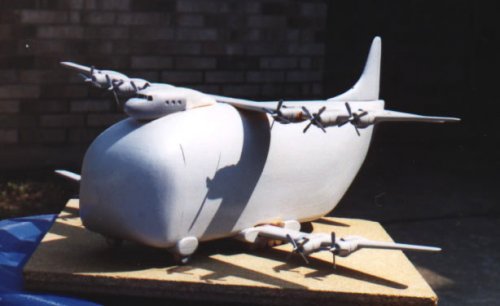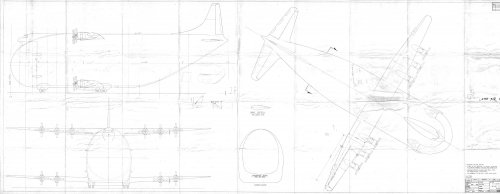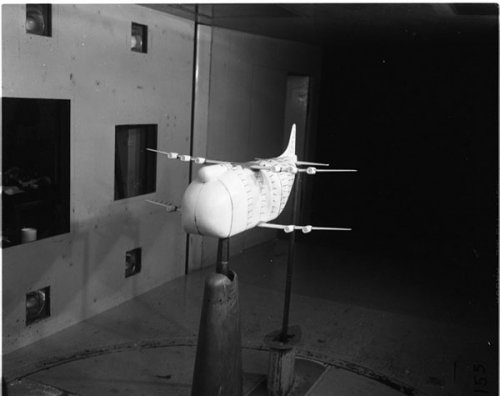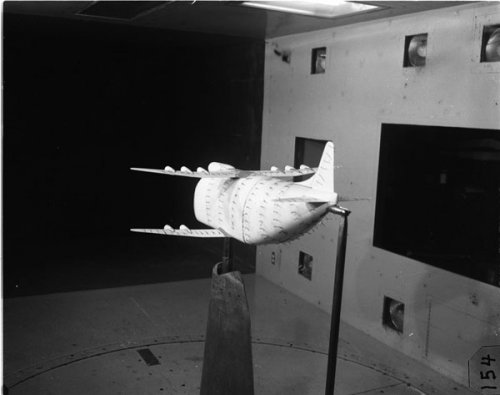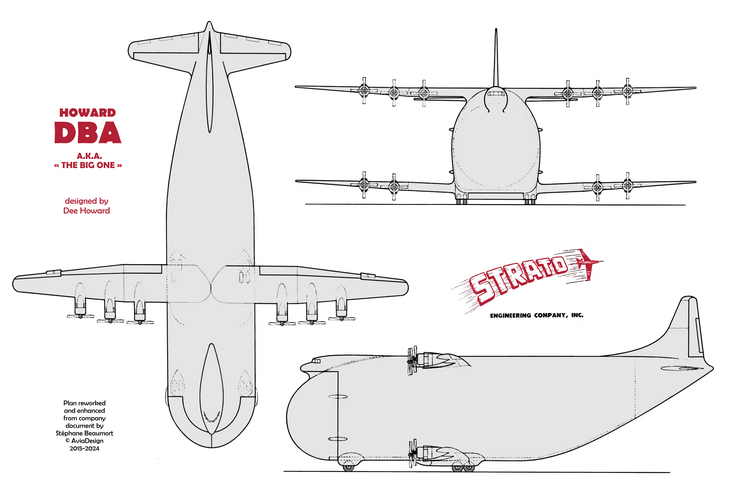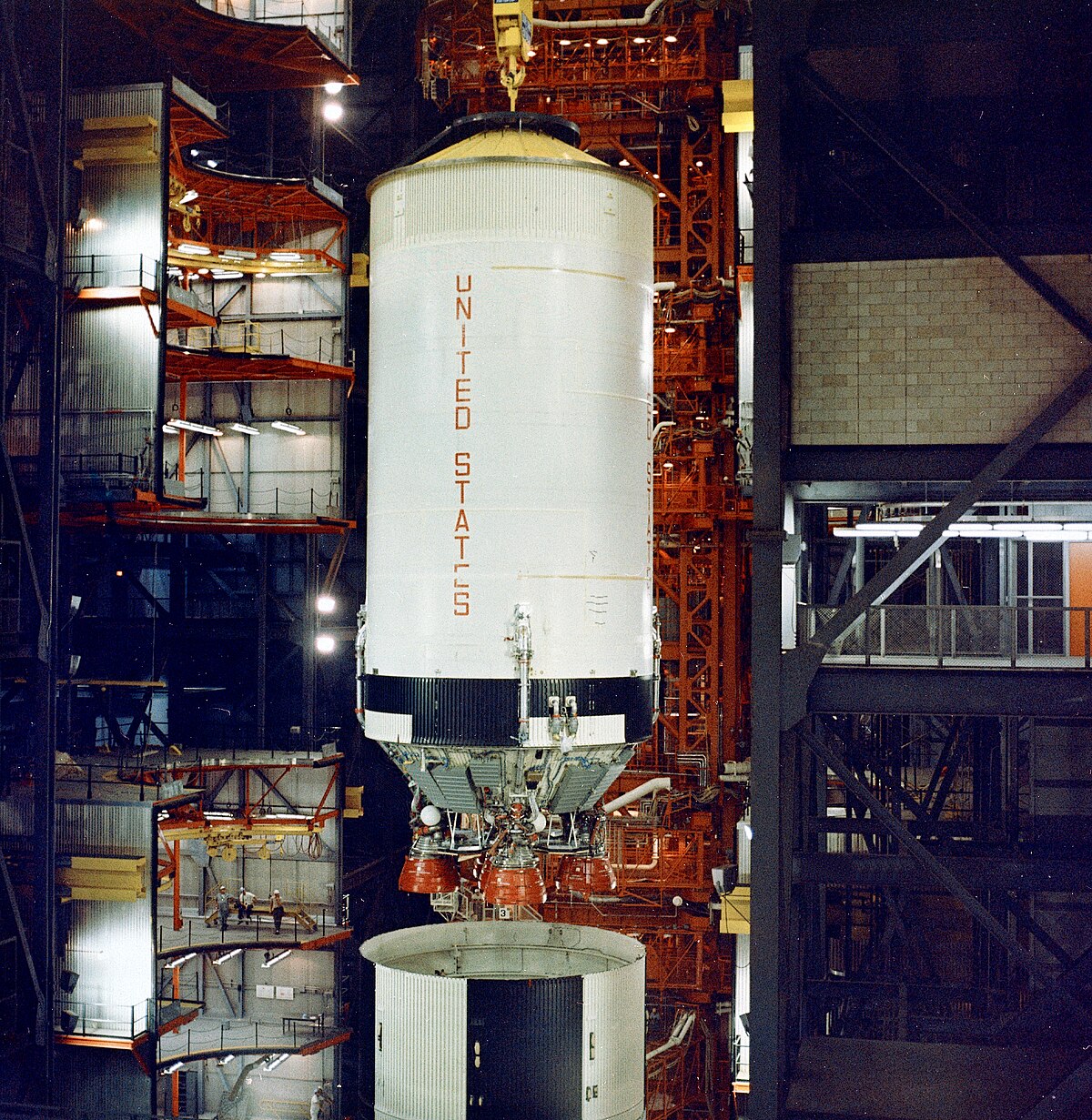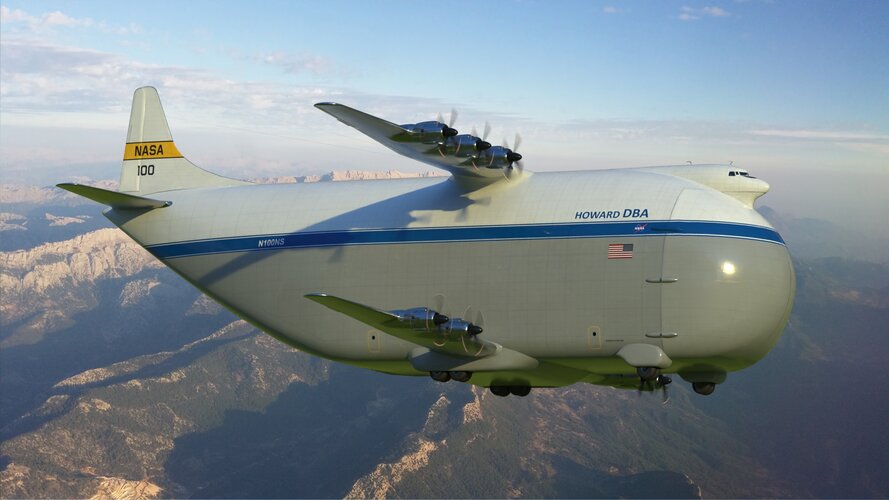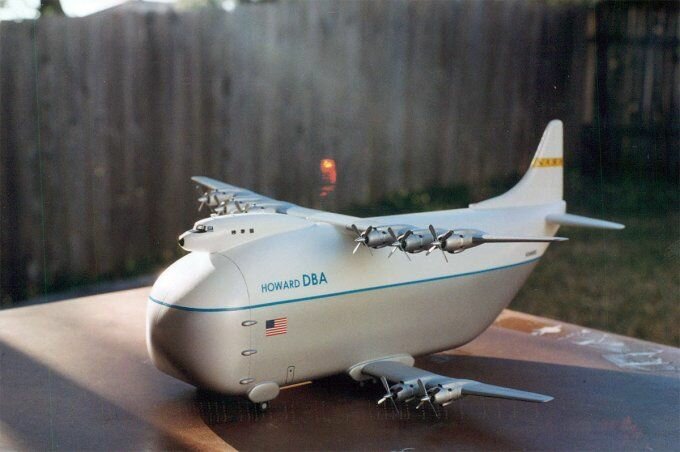- Joined
- 1 November 2009
- Messages
- 638
- Reaction score
- 429
I'm re-posting this in a new thread to give this design a more proper identification and to have the thread ready when additional information (and hopefully the drawing) can be made available. I've done a few searches here on Dee Howard and haven't come up with anything. Should there be an existing thread under a different name, then this one can be deleted. Otherwise, if little fragments on this one are in other threads, here is where to move them.
The name or designation on the drawing was simply "The Big One" and if I remember correctly, the drawing was for construction of the wind tunnel model. I wonder if this picture is of that model.
I remember working out from the scale given that the fuselage was about 45 foot wide and even with the internal structure there would be enough room to handle the 33 foot diameter Saturn stages. The DC-7 parts were clear to see in the drawing though I remember seeing another image that suggested using a C-97 forward fuselage for the cockpit section.
The name or designation on the drawing was simply "The Big One" and if I remember correctly, the drawing was for construction of the wind tunnel model. I wonder if this picture is of that model.
I remember working out from the scale given that the fuselage was about 45 foot wide and even with the internal structure there would be enough room to handle the 33 foot diameter Saturn stages. The DC-7 parts were clear to see in the drawing though I remember seeing another image that suggested using a C-97 forward fuselage for the cockpit section.

